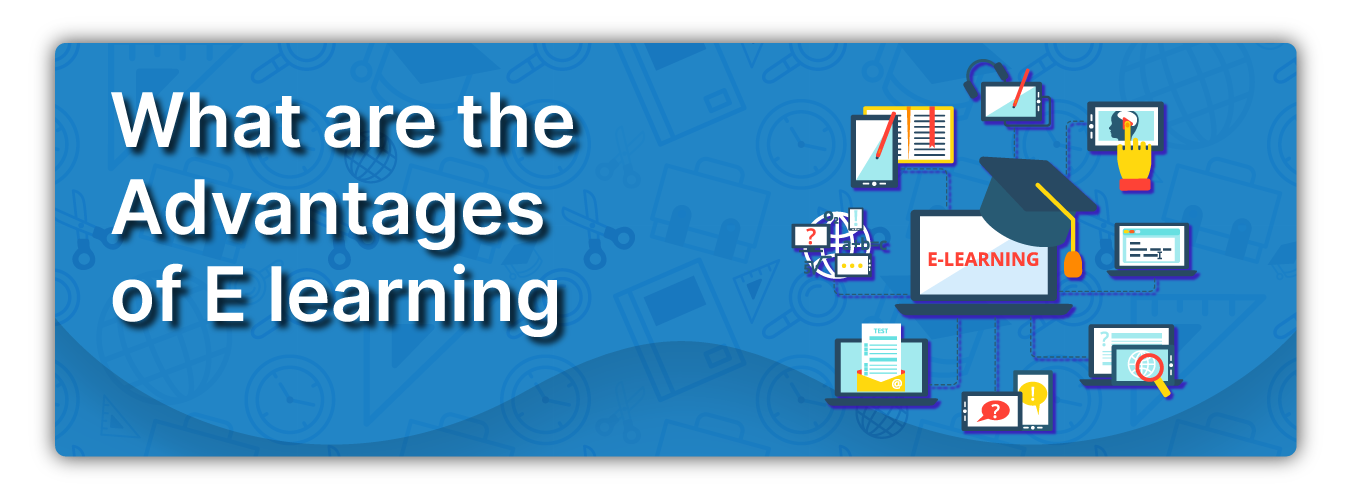Digital learning is emerging as a resource to help millions of students learn. The term refers to the learning method where students use digital devices to learn. It means that the process entirely depends upon the use of the Internet and smart devices. Moreover, online learning helps form alliances among students and teachers from across the world. These alliances ease the learning process and help produce better learning outcomes. As a result, students get exposure to an open learning platform that offers different subjects. Also, the study material in a digital learning classroom is available online. Students can access it from anywhere and everywhere across the globe. It adds to the advantages of digital learning in the contemporary learning environment.
In our blog on What is Digital Learning, we gave a detailed account of the term. Learn about the advantages of digital learning in this blog.
8 Advantages of Digital Learning
1. Affordable
Digital learning is an affordable form of learning for all students. The costs that go into traditional learning are cut down in online learning. Students do not have to pay for uniforms, stationery, accommodation, and bear other such expenses. Moreover, the travel expenses do not incur in the digital learning process. Students can take classes wherever they are, without traveling to the school/college/institute. Also, online learning does not require any stationeries or spending on study material. Learners get everything online in one place. They can even revisit the lessons for a quick recapitulation.
2. Technology-Based
Digital learning makes use of technology to impart education. The entire curriculum is available online as digital study material. Students have the access to use it anytime and anywhere with the help of the Internet. The only thing students need is an internet-enabled device, be it a smartphone or preferably a laptop. Not only does the tech-savvy nature of digital learning facilitates learning, but it contributes to the skill development of students. It works in their favor as the majority of jobs employ technology and tech-savvy individuals. Thus, digital learning helps students become familiar with technology and prepare for jobs.
3. Saves Time
The traditional learning classroom requires students to be physically present. Students have to travel to the class daily with the stuff they need, including books, notebooks and other study materials. Also, there are specific time slots for each class, and students have to follow a timetable. Moreover, the class does not begin without a teacher. So, the students may have to wait sometimes. Such a schedule occupies them completely, and there is no time left to work on other skills.
However, digital learning does not have any time constraint or specific schedule to follow. Students can learn from their homes without having to wait for anyone. Thus, it saves a lot of time for the students to engage in other learning activities for skill development.
4. Easily Accessible
Getting admission to a school or college includes a lot of planning and changes in the learner’s schedule. Many-a-times, students wishing to pursue a course fail to get admission to the desired school or college. It often happens due to the inability to bear travel or accommodation expenses as it may require overseas travel sometimes. In this context, digital learning is a more accessible option. Students can get admission to any school, college or university in the world and learn and receive guidance from teachers around the world. Also, it opens routes to enormous learning opportunities and provides a wide range of mentors to assist the learning process.
5. Competition is Less
The intensity of competition in traditional education is higher in comparison to digital learning. More competition creates pressure upon the students to learn and perform better. However, not every child is capable of handling such competition. As a result, such students end up performing average in the class. Additionally, more competition creates mental pressure on the students, often tough to handle. Eventually, it starts affecting their learning and the learning outcomes.
On the other hand, digital learning allows students to make their choices and compete on the level they can handle. Therefore, students can learn without dealing with additional mental pressure and competition.
6. Promotes Experiential Learning
Learning is all about the experience. The contemporary education landscape and students require an experiential form of learning. Traditional education was all about paperbacks, blackboards and pen-and-paper examinations. But, the present era of learning includes a lot more. Learning does not limit to the classroom but goes beyond books. Interactive learning is the current way of learning and students learn more through experience than classroom lecturing. Digital learning involves using different media to provide a meaningful learning experience.
Moreover, the use of Artificial Intelligence effectively enhances the learning experience. Learners get to experience learning through interactive videos and AI-enabled learning tools. As a result, they easily learn complex concepts with the help of visual representations.
7. Better Retention
A child learns more through experience than mere rote learning. The things that the child learns through reading and writing stay in the memory for comparatively less time. However, learning through e\experience creates an imprint on the student’s mind that stays longer. Traditional learning involves the use of books and other reading and writing materials. Whatever the students learn through them does not remain intact. They forget most of the things they learn once they take the examinations.
However, in digital learning, students get to experience what they learn. This learning stays with them even after they are done with their examinations. In essence, digital learning is life-long learning.
8. Personalized Learning
The current education landscape is experiencing numerous changes with developments in technology and teaching-learning needs and methods. Students look for a variety of options to learn and opt from a range of subjects that serve their interests and learning requirements. Also, the career choices of contemporary learners are very different. They look for more dynamic and creative career options rather than the traditional ones. Digital learning offers a wide range of courses without the constraints of time, space and money so that students can get a personalized learning experience and learn at their own pace.


